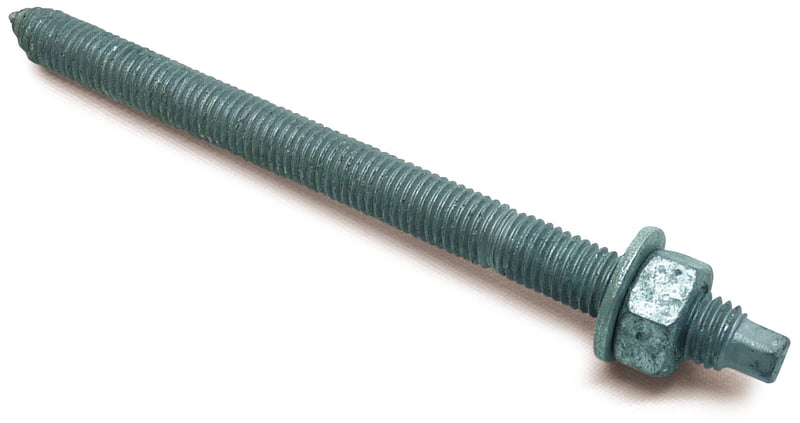In the realm of construction and infrastructure development, ensuring the stability and durability of structures is paramount. Among the several types available, chemical or resin anchors have emerged as versatile and robust solutions. This article delves into the world of chemical/resin anchors and fixings, exploring their applications, advantages, and considerations for effective use.
- What are Chemical Anchors?
- How are Chemical Anchors different from Mechanical Fixings?
- Types of Chemical Anchors
- Resin Types
- How are Chemical Anchors installed?
- Pros and Cons of Chemical Anchors
- Conclusion
What are Chemical Anchors?
Chemical anchors, also known as resin anchors, are special construction fasteners designed for a strong and long-lasting connection between a structure and its substrate. These anchors include steel studs, bolts, and anchors that are bonded to masonry and concrete using a resin-based adhesive, ideal for applications requiring a high load capacity.
How are Chemical Anchors different from Mechanical Fixings?
All anchors work with one of the following different working principles or a combination of them:
- Friction
- Undercut/Interlock
- Bonding
Mechanical anchors depend on physical mechanisms such as expansion, friction, or interlocking features to hold the fastener in place. There is no chemical bonding involved.
Meanwhile, chemical anchors use bonding and occasionally interlocking mechanisms. The resin is injected into the substrate, after which the anchor is inserted. The resin creates a strong chemical bond between the drilled anchor and the substrate. Some stud designs may use additional interlocking features to ensure that the anchor grips to the material.
As a result, chemical anchors naturally have higher load-bearing capacities and therefore can be used in applications where substantial strength is required, such as securing heavy machinery or critical structural components, whereas mechanical fixings can be used for less demanding applications.
However, within M&E, chemical anchors are used not as a go-to, but rather as a problem-solver in more particular cases where the substrate the anchor is fixing on to is poor, porous, old, or aerated. This is because the resin fills in any gaps in the substrate, effectively smoothening any irregularities that may affect the anchor’s performance.
Types of Chemical Anchors
Chemical anchors offer a diverse range of options, featuring various finishes, thread types, and lengths. Choosing the appropriate anchor type depends on factors such as substrate condition, environmental considerations, load requirements, and other relevant parameters, requiring the expertise of a specialist for proper selection.
Additionally, there are resin types that come in cartridges and those that are applied through vials or capsules, which can be made of plastic or glass. The selection between these options depends on personal preference and the specific application at hand. Vials provide a precise amount of resin tailored for a single hole, making them ideal for solid substrates. On the other hand, cartridges contain enough resin for multiple holes but may result in some wastage.
It is important to note that vial types are not recommended for use with porous substrates or substrates that already have holes. Careful consideration of the studding type and application method ensures optimal performance in construction projects.
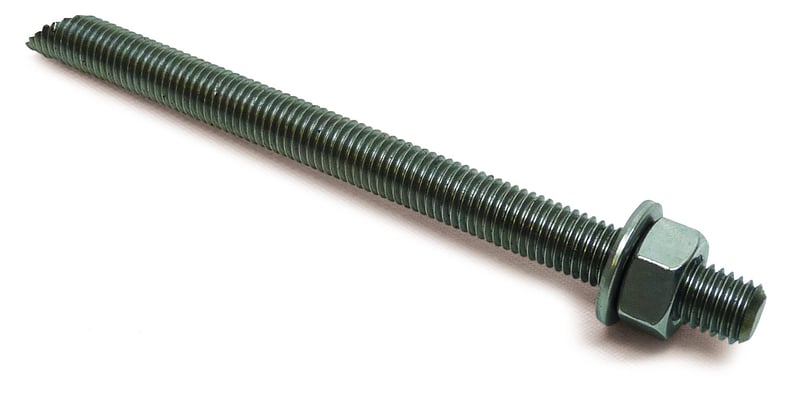
Resin Stud - Stainless Steel

Resin Stud - Bright Zinc Plated
Resin Stud - Hot Dip Galvanised
Resin Types:
Alongside this, different resin compounds are selected based on the intended application, the material involved, and the load the anchor needs to support. Among the main types are three primary resin categories: vinyl ester, epoxy, and polyester, alongside others referred to as 'hybrids.' Here is an overview of the main resin types:
- Polyester Resin (Good)
- Vinyl Ester Resin (Better)
- Epoxy Resin (Best)
Keep in mind that there are other hybrid types and subtypes, but these are the 3 main ones!
It is advisable to opt for Epoxy Resin or Vinyl Resin, over Polyester Resin.
It's also noteworthy that certain resin anchors come with WRAS (Water Regulations Approval Scheme) certification, making them specifically suitable for water and sewage-related applications.


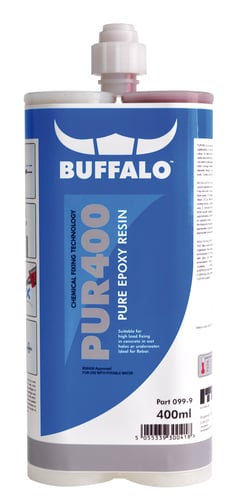
How are Chemical Anchors installed?
Here is the sequence of the installation process for chemical anchors:
1. Drilling:
A hole is drilled into the substrate where the anchor will be placed. The size and depth of the hole are crucial and must adhere to the manufacturer's specifications.

2. Cleaning:
The drilled hole is cleaned to remove any dust or debris, ensuring optimal conditions for the bonding process. Following this step, adhering to the resin manufacturer’s instructions is crucial.

3. Resin Application:
The resin, in the form of a two-part system (resin and catalyst), is then injected into the drilled hole, surrounding the inserted anchor. This process may involve the use of specialized dispensing tools.
It is crucial to note that if the resin comes in a cartridge, before introducing the resin into the drilled hole, it is important to discard 5 to 10 centimetres of the product onto a cardboard or paper until a uniform colour and consistent texture are achieved. This signals the thorough mixing of the two components (resin and catalyst) and indicates readiness for application. The choice of block depends on the material being drilled. For hollow materials, the use of a sleeve is recommended, as it facilitates the even distribution of the applied resin. Conversely, for solid materials, a sleeve is unnecessary, and the mixture can be directly introduced into the hole.
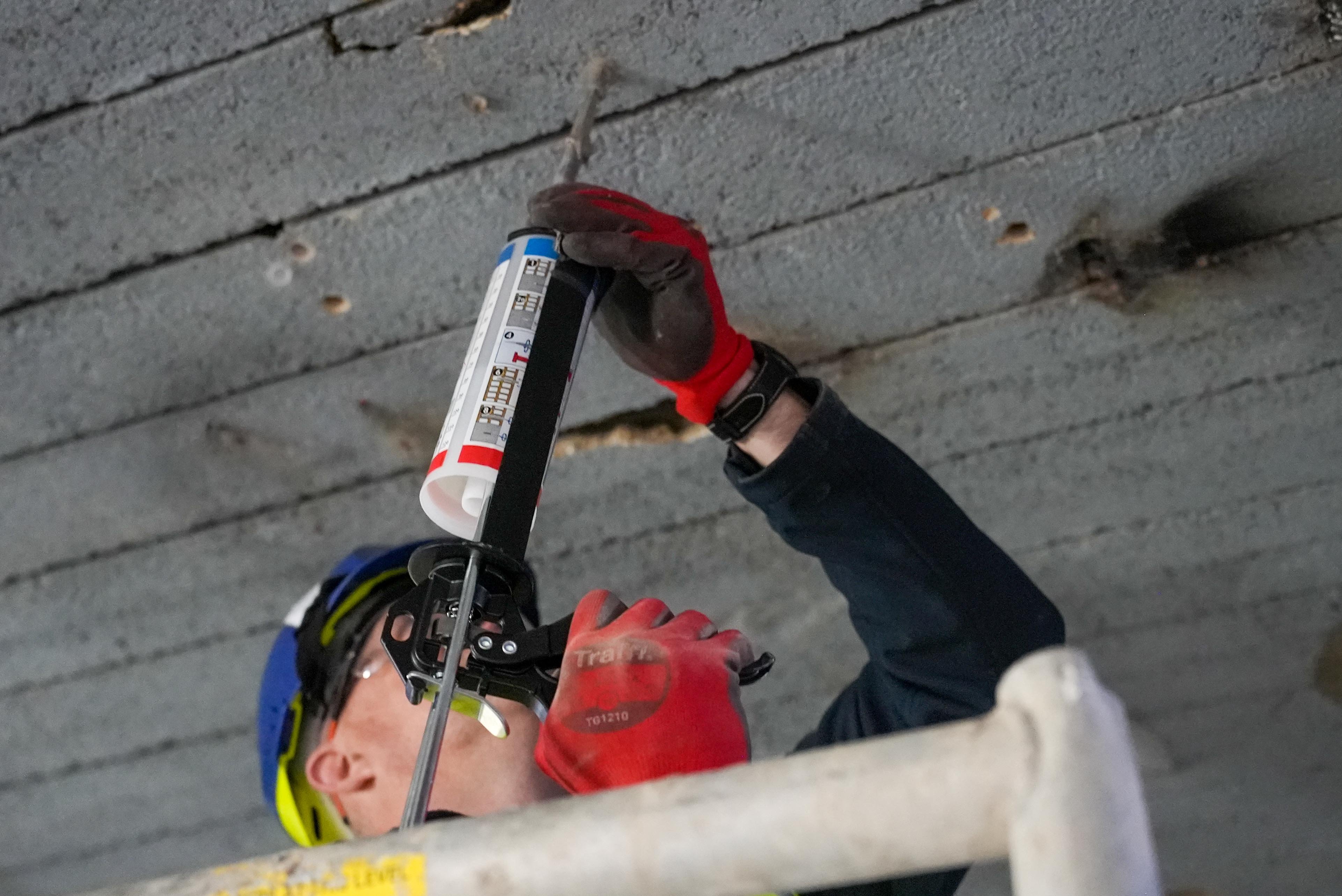
4. Inserting the Anchor:
Once the resin has been applied, the anchor is inserted into the cleaned hole.
It is advisable to rotate the fastening element slightly upon insertion to ensure optimal adhesion of the resin to its surface. Additionally, it is important to consider that the resin has a brief window of only a few minutes before drying begins. Consequently, the handling time is limited, and it is recommended to promptly insert the fastener right after filling the drilled hole.
Certain builders may opt to use M10 studding or threaded bar, adjusting it to the desired size and inserting it into the resin – however, this method has its drawbacks. M10 studding typically comes coated with shipping oil, which can negatively impact the resin. It is advisable to use a resin stud instead of cutting M10 studding with a hacksaw. The choice of studding depends on the specific application, considering factors such as load and environmental conditions.
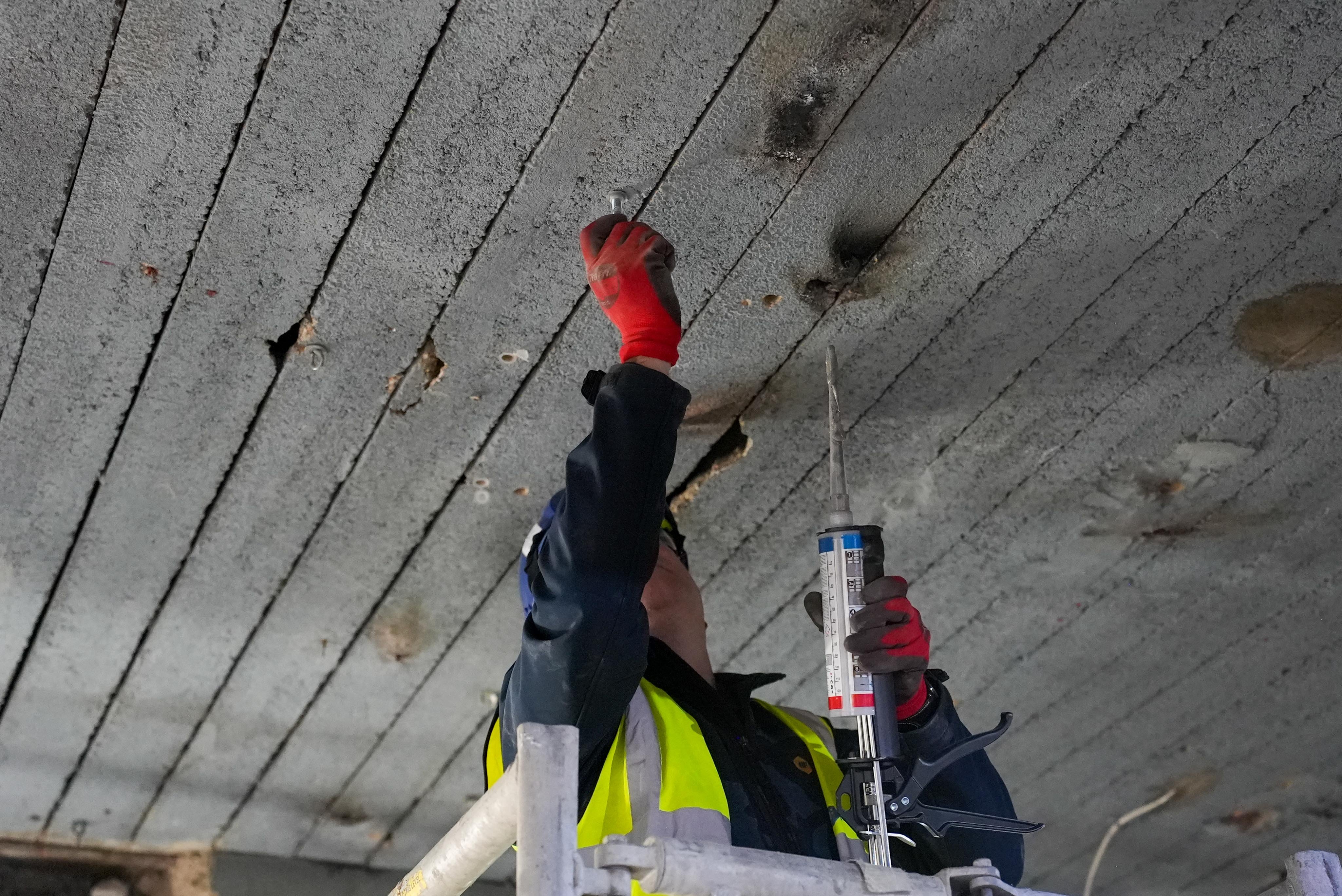
5. Curing Time:
Within the hole, the resin and catalyst mix, initiating a chemical reaction. This reaction leads to the curing of the resin, creating a strong bond between the anchor and the substrate.
The curing time is a critical phase where the resin solidifies and the bond between the anchor and the substrate strengthens. This time is determined by the specific product used and the ambient temperature.
Many modern chemical fixings offer rapid curing times, allowing for faster construction processes and minimizing project timelines.
Pros and Cons of Chemical Anchors:
Understanding both the advantages and disadvantages of chemical fixings is crucial for making informed decisions in construction projects. Careful consideration of specific project requirements and conditions will help determine whether chemical fixings are the most suitable option for a given application.
Pro #1: High Load Capacity
While mechanical fixings also offer strength, their load-bearing capacity may be comparatively lower than chemical fixings, making them suitable for less demanding applications.
Known for their high load-bearing capacity, chemical fixings are often used in applications where substantial strength is required, such as securing heavy machinery or critical structural components.
Pro #2: Versatility
The effectiveness of mechanical fixings can be substrate-dependent, and they may be more suitable for certain materials like concrete or wood.
However, chemical anchors can be used in various substrates, including concrete, masonry, and stone, providing versatility in construction projects. As mentioned before, they can also be used in exceptional cases where the substrate is poor, porous, old, or aerated, as the resin can smooth out any irregularities or gaps.
Pro #3: Durability
Chemical anchors create a durable bond resistant to environmental factors, making them suitable for both indoor and outdoor applications.
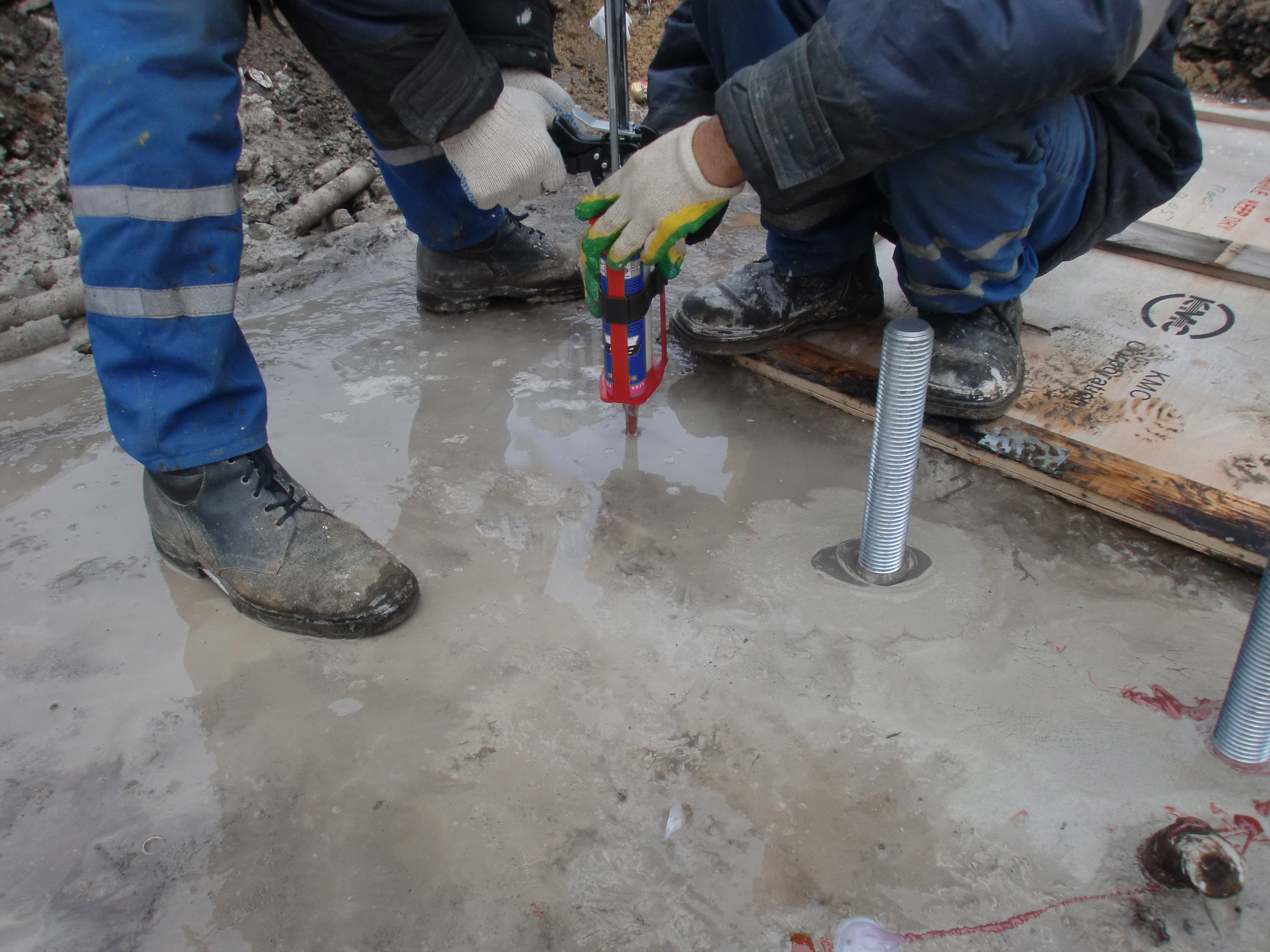
Con #1: Complex Installation
The installation of chemical fixings involves a precise process of injecting resin or adhesive into a drilled hole, followed by inserting the fastener. This process requires attention to curing times and conditions, alongside individuals with specialised training. The curing time of the adhesive or resin may extend the installation process, and it is important to allow sufficient time for the chemical bond to develop.
In contrast, installation of mechanical fixings typically involves drilling a hole, inserting the fastener, and using mechanical force or expansion to secure it in place. Once the fastener is in place, it's ready to bear load immediately. This process is simpler and faster compared to chemical fixings.
Con #2: Costly
Chemical fixings may have a higher initial cost compared to some mechanical alternatives. However, this cost is often justified by their superior load-bearing capabilities and long-term reliability.
Con #3: Limited Adjustment
Once installed, adjusting, or removing chemical fixings can be challenging. It's essential to plan and position them accurately during installation.
In making decisions for construction projects, a thorough understanding of both the pros and cons of chemical anchors is crucial. Project-specific requirements and conditions should guide the choice between chemical and mechanical fixings. Despite the challenges, the use of chemical anchors continues to grow, driven by their superior performance and long-term reliability.
Conclusion
In conclusion, the realm of construction and infrastructure development demands meticulous consideration of anchoring solutions, with chemical/resin anchors emerging as versatile and robust choices. The unique combination of bonding and occasional interlocking mechanisms sets chemical anchors apart from mechanical fixings, providing higher load-bearing capacities and solutions for challenging substrates. The diverse array of studding and resin types underscores the importance of expert selection for optimal performance. Despite the complex installation process and higher initial costs, the benefits of durability, versatility, and superior load capacity position chemical anchors as indispensable problem-solvers in construction. The key lies in informed decision-making, aligning project requirements with the strengths and considerations of chemical fixings.

-1.jpg?width=451&height=381&name=DSC09597%20(1)-1.jpg)

